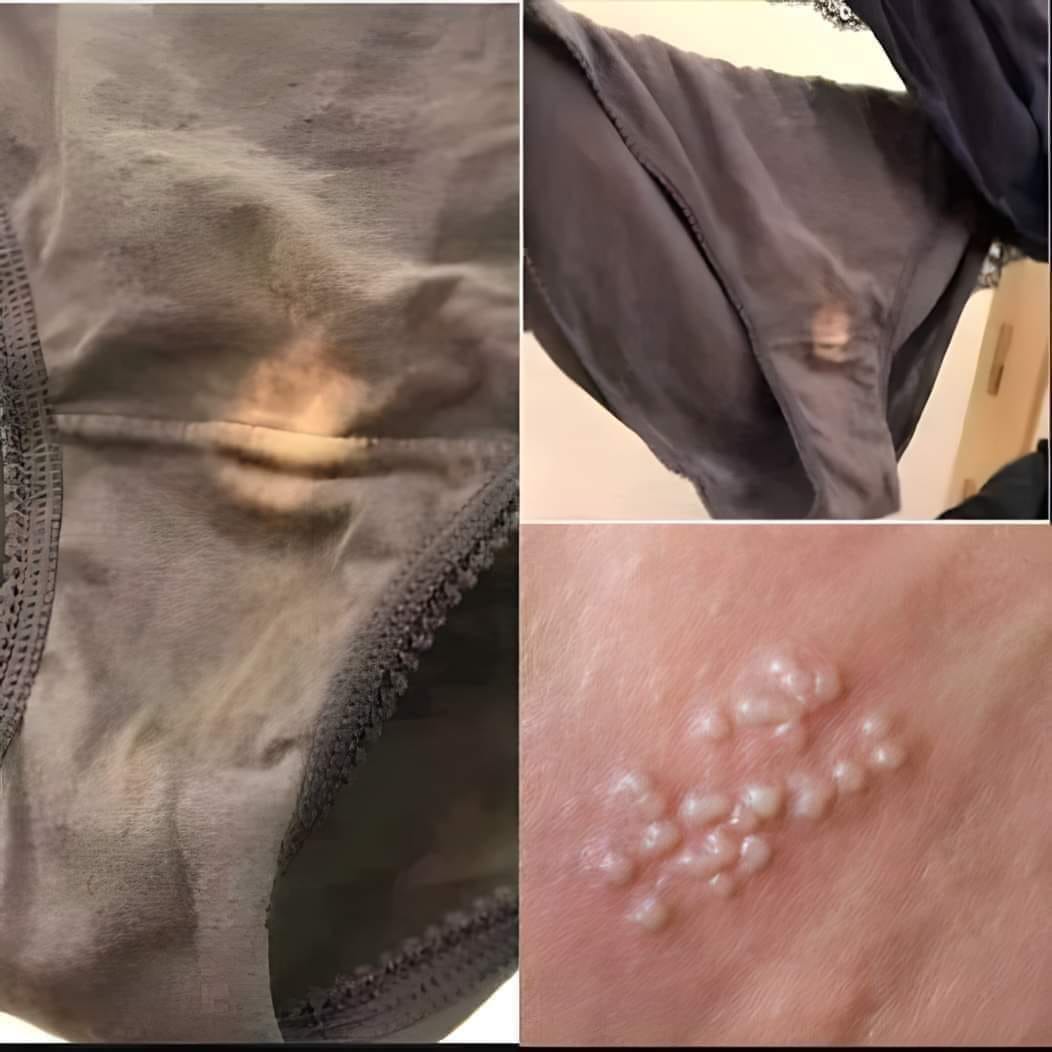The internet has become an indispensable tool in our everyday lives, offering a seemingly endless supply of information on virtually any topic you can think of. Whether it’s solving everyday mysteries, finding life hacks, or debunking old myths, the internet has made it possible to learn and discover answers that would have been out of reach just a few decades ago. One curious topic that has gained a lot of attention recently is the question: What’s causing those mysterious “bleach” stains on your underwear?

If you’ve ever noticed odd discolorations on your underwear that look suspiciously like bleach spots, rest assured that you’re not alone. Many women have taken to the internet to find answers to this puzzling issue, and thankfully, the explanation is far less alarming than you might think.
First and foremost, let’s debunk a common misconception: these stains are not the result of your washing machine or the detergent you’re using. In fact, the cause is entirely natural and related to your body’s healthy processes.
Dr. Vanessa MacKay, a specialist from the Royal College of Obstetricians and Gynaecologists, explains, “The vagina has a self-cleaning mechanism through natural secretions. It contains beneficial bacteria that help protect it from infections.” These secretions are an essential part of maintaining vaginal health and keeping harmful bacteria at bay.
One of the reasons these “bleach” spots appear on underwear has to do with the natural acidity of vaginal discharge. According to the National Institutes of Health, the normal vaginal pH level ranges between 3.8 and 5.0, which is moderately acidic. This acidity is vital because it prevents the growth of harmful bacteria and yeast, keeping the vaginal environment balanced and healthy. For reference, a neutral pH level is 7, which means that the natural discharge from the vagina is more acidic than neutral water.
So how does this acidity cause those strange stains on your underwear? The answer is simpler than you might expect. When the acidic vaginal discharge comes into contact with certain fabrics, especially darker-colored underwear, it can react with the dyes in the fabric. This interaction can lead to faded spots or areas that look as if bleach has touched them. Essentially, the discharge acts like a mild acid that lightens the fabric over time.
@dr.prasanthi Ever wondered why this happens? #obgyn #tiktokdoc #fyp #browntiktok ♬ Euphoria season 2 is making my brain explode – Mars
Dr. MacKay emphasizes that having clear or white vaginal discharge is completely normal and a healthy part of your body’s self-cleaning process. It’s a sign that your body is doing its job to maintain the right pH balance. However, disturbing this natural balance by using scented products, douching, or harsh soaps can lead to infections like bacterial vaginosis or yeast infections. These products can upset the delicate ecosystem in the vagina, stripping away the good bacteria that are essential for protection.
For women who notice these “bleach” stains, it’s a relief to know that they’re not caused by anything harmful. In fact, the presence of these spots is a sign that your body is functioning exactly as it should. But if you’re looking to minimize the appearance of these stains, consider wearing lighter-colored or white cotton underwear, which tends to be less reactive to acidic discharge. Cotton is also a breathable material that helps keep the area dry, reducing the risk of irritation.
Another tip for reducing these stains is to avoid using harsh detergents or fabric softeners on your underwear. These can sometimes leave residues that may further react with your body’s natural secretions. Instead, opt for gentle, hypoallergenic laundry products that are less likely to cause irritation.
It’s also crucial to avoid using unnecessary feminine hygiene products that promise to keep you “fresh.” The truth is, your vagina is perfectly capable of keeping itself clean without any external help. In fact, using these products can do more harm than good, leading to imbalances that may cause infections or discomfort. Stick to washing with warm water and a mild, unscented soap for the external genital area, and let your body’s natural processes handle the rest.
In a world where misinformation is rampant, it’s always helpful to have straightforward, science-backed explanations for the things we observe. Knowing that these “bleach” spots are merely a natural result of your body’s healthy self-regulation can put your mind at ease. There’s no need to panic if you notice these spots—just understand that it’s a sign of your body doing what it’s supposed to do.
As women continue to share their experiences and learn more about their bodies, it’s vital to spread accurate information. If you found this explanation helpful, consider sharing it with your friends and family. After all, knowledge is empowering, and understanding how your body works can help you make better choices for your health and well-being.
The internet has opened the door to discussions that were once too embarrassing or taboo to talk about openly. By demystifying common bodily functions, we can break down stigmas and encourage everyone to have a healthier relationship with their bodies. So the next time you notice those peculiar spots on your underwear, remember—it’s just a sign that your body is taking care of itself, one acidic secretion at a time.
In the end, understanding these small, everyday mysteries can lead to greater awareness and appreciation for how incredible the human body truly is. Embrace the knowledge, share it, and take comfort in knowing that something as simple as a “bleach” spot on your underwear is actually a sign of good health.





